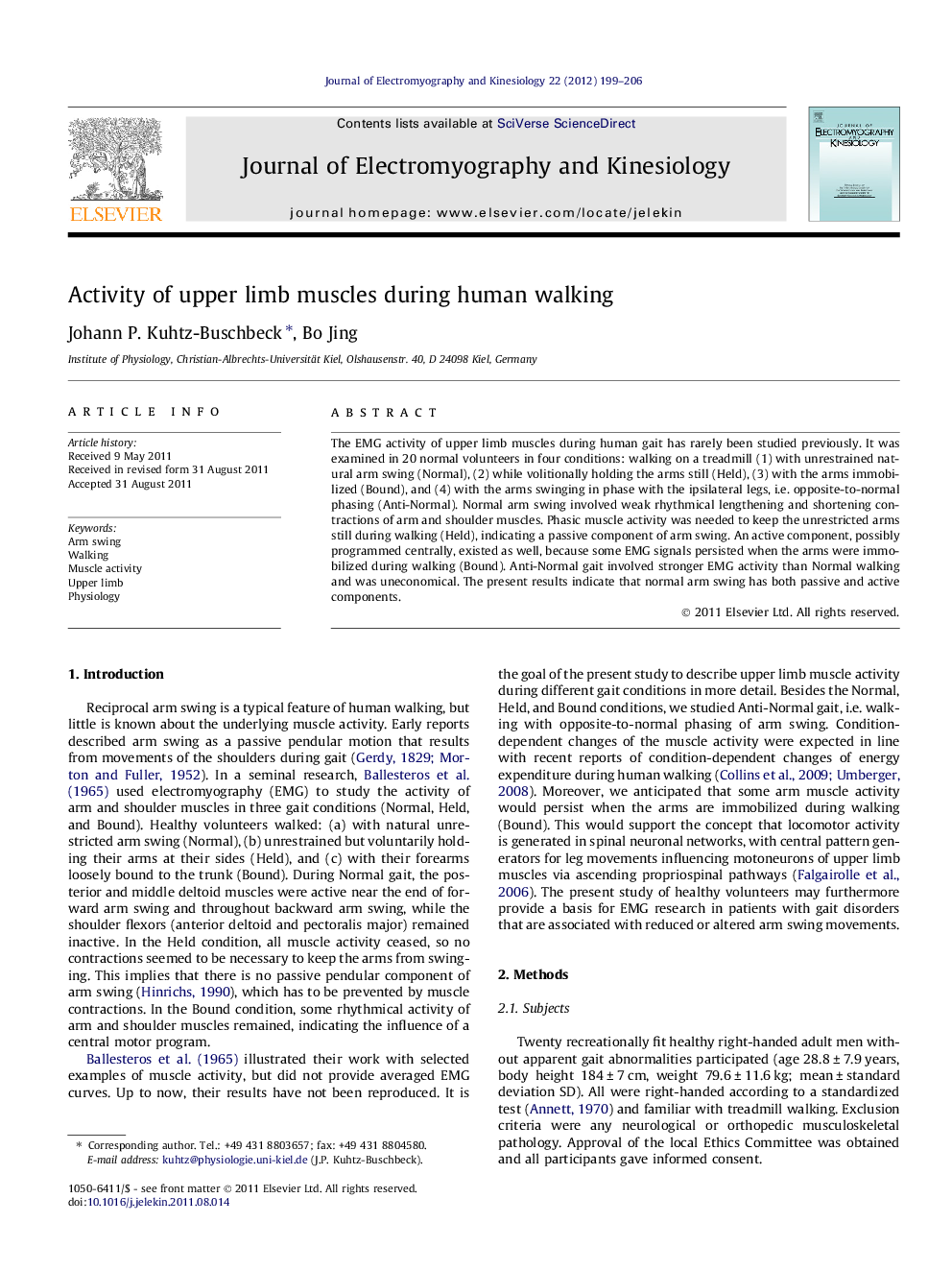| Article ID | Journal | Published Year | Pages | File Type |
|---|---|---|---|---|
| 4064990 | Journal of Electromyography and Kinesiology | 2012 | 8 Pages |
The EMG activity of upper limb muscles during human gait has rarely been studied previously. It was examined in 20 normal volunteers in four conditions: walking on a treadmill (1) with unrestrained natural arm swing (Normal), (2) while volitionally holding the arms still (Held), (3) with the arms immobilized (Bound), and (4) with the arms swinging in phase with the ipsilateral legs, i.e. opposite-to-normal phasing (Anti-Normal). Normal arm swing involved weak rhythmical lengthening and shortening contractions of arm and shoulder muscles. Phasic muscle activity was needed to keep the unrestricted arms still during walking (Held), indicating a passive component of arm swing. An active component, possibly programmed centrally, existed as well, because some EMG signals persisted when the arms were immobilized during walking (Bound). Anti-Normal gait involved stronger EMG activity than Normal walking and was uneconomical. The present results indicate that normal arm swing has both passive and active components.
